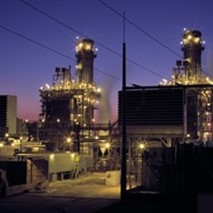For further insights on Côte d’Ivoire, or to understand how Africa Matters Ltd can support you, please email Associate Tiffany Wognaih on [email protected].
Recent power outages in Côte d’Ivoire have laid bare the challenges rising energy demand poses to the country. Low water levels at hydroelectric dams, and insufficient capacity at thermal power plants, triggered electricity outages in major cities, including the commercial capital Abidjan. Since the outages began in April, the national utility company Compagnie Ivoirienne d’Electricité introduced a two-month load shedding programme – a measure that is already hampering business activity and likely to undermine the government’s 6.5 percent growth forecast for 2021. Côte d’Ivoire is known for creating the continent’s third largest electricity generation system in less than ten years, with nearly 94 percent of its citizens connected to the grid – a far cry from its current predicament.
Now is therefore a critical moment for Côte d’Ivoire to accelerate its drive towards a greener energy mix. Energy demand is ballooning, at an estimated eight percent per year, and accordingly the country aims to nearly triple its power supply to 6,000 MW by the end of 2030, of which 42 percent will be generated from renewable sources. Climate change vulnerability is pushing a diversification away from the country’s reliance on hydropower as the primary source of renewable energy, and into other sources, including solar.
Status of the energy sector in Côte d’Ivoire
The liberalisation of the energy sector – a key factor to Côte d’Ivoire’s power generation success
In the 1990s, the impact of ongoing droughts on hydropower generation encouraged Côte d’Ivoire to diversify its energy mix and turn to a reliable domestically-exploited alternative – natural gas – thereby increasing its fossil fuel-powered generating capacity. In 1997, nearly 45 percent of energy supply was produced by gas-powered plants, and by 2018 this figure had risen to 75 percent. Now Côte d’Ivoire has a total installed generation capacity of approximately 2,230 MW and has historically tended to meet its domestic demands, even exporting around 10 percent of its electricity output to the subregion. Since 2011, the overall national electricity access rate in Côte d’Ivoire has nearly tripled.
This success is largely attributable to the government’s decision to start liberalising the electricity sector in the 1990s, while in the meantime implementing regulations to make the energy market more competitive. International donors have also played a key role in increasing investor confidence by providing financial, technical, and governance support. According to the World Bank, private operators in Côte d’Ivoire are now responsible for 70 percent of energy production and 100 percent of its distribution.
Côte d’Ivoire’s transition towards a greener energy mix: progress and challenges
In 2016, under pressure from regional body the Economic Community of West African States, Côte d’Ivoire launched its national renewable energy plan with ambitious targets that, so far, the country has failed to meet, instead remaining wedded to natural gas.
Côte d’Ivoire uses domestic natural gas on a significant scale to feed the burgeoning industrial sector. The energy mix is dominated by natural gas-fired thermal power plants, which are more efficient than coal-fired plants and can be built quickly and at low cost. Additionally, the exploitation of domestic oil and gas resources remains a major source of revenue to the Ivorian state – amounting to USD 200 million in revenue in 2019.
Nonetheless, Côte d’Ivoire’s dependence on fossil fuels presents challenges. The country’s current energy portfolio relies on domestic natural gas reserves that are finite. Without further exploitation of offshore domestic gas reserves, the country will be forced to rely on other sources by 2024, including costly imports. Even if Côte d’Ivoire and its partners can exploit further commercially viable gas reserves, this will compromise the country’s ability to achieve its climate action goals, known as nationally determined contributions (NDCs), including reducing its gross greenhouse gas emissions by 28 percent. The oil and gas sector is already one of the major sources of pollutants in Côte d’Ivoire. Increasing the country’s reliance on gas and oil-fired power generation will hinder attempts to achieve its NDCs.
Meanwhile, the Ivorian government – in its efforts to boost power production and push green energy generation – aims to increase hydropower’s share of the energy mix to 26 percent by 2030. At present, hydropower is the most convenient renewable energy source to exploit for Côte d’Ivoire because such plants can produce clean energy in high quantity and at low cost once operational. To this end, the government has identified various hydro projects to be commissioned and developed over the next ten years. These include the 44 MW Singrobo hydropower project developed under a public-private partnership with the Ivoire Hydro Energy consortium. The project entered the construction phase in May 2020 and is expected to become commercially operational by early 2023. Nonetheless, Côte d’Ivoire’s overreliance on hydroelectricity continues to make its energy sector vulnerable to the impacts of climate change. In recent years, climate change has reportedly resulted in a decrease in total rainfall, a delayed start to the rainy season, and an increase in the frequency and duration of droughts – therefore exposing the country to the risk of more frequent power outages in the coming years.
The needs of an expanding economy combined with limited gas reserves and increasing exposure to droughts thus offer opportunities for private investors to exploit other untapped renewable energy resources, including solar.
Unlocking Côte d’Ivoire’s solar power potential
A return to political stability and improvement of the business environment through supportive fiscal policies and structural reforms have resulted in a strong upsurge in economic activity and GDP growth in Côte d’Ivoire. In this economic environment and against the backdrop of rising demand for electricity, expanding access to electricity and boosting production capacity have become key government priorities.
Much of this new capacity is likely to come from new thermal power plants and hydroelectric dams. However, in recent years, the Ivorian government has been gradually recognising the important role that other renewable energies such as solar could play in its energy expansion strategy. Côte d’Ivoire, especially its northern regions, has good potential for solar power electricity production, with an average of six hours of sunshine a day. The government’s approach to electrification has traditionally been to expand existing distribution networks and connect new consumers to the national grid. However, solar power can be both used to feed electricity into the grid via utilities and to power households and businesses in remote locations or areas with poor grid reliability via off-grid installations – allowing such resource to play a greater role in the country’s future energy mix.
Although Côte d’Ivoire’s solar sector has yet to reach its full potential, the government is seeking to develop 400 MW of solar by 2030, with 130 MW of solar currently under development. These include 25 MW and 66 MW solar power plants in the northern Korhogo region, developed by Morocco-based Nova Power and Chinese-Canadian manufacturer Canadian Solar respectively. The government has introduced fiscal incentives for their investments in the renewable energy sector. These include a 50 percent reduction on value added tax on imported solar materials; a 40 to 50 percent reduction in the amount of customs duties to be paid on equipment and materials; and corporate tax benefits lasting from 5 to 15 years depending on the asset’s location, but that only apply when the project is operational.
The Ivorian government – together with international donor agencies such as the African Development Bank Group (AfDB) – has also supported the growth of the off-grid solar sector through several targeted initiatives. In 2014, the Ivorian government launched the Programme Electricité pour Tous (Electricity for All programme) with the ambition of bringing electricity access to nearly one million low-income households within five years through both off-grid and on-grid projects. The challenge of rural electrification provides a promising opportunity for the development of off-grid solutions. This initiative has allowed companies such as Zola Energy Côte d’Ivoire SAS (ZECI) – a joint-venture between French state-owned electricity company EDF Group and US renewable energy solution provider ZOLA Electric – to enter the Ivorian market and sell home solar systems via mobile money payments. In 2020, ZECI mobilised – with the backing of the AfDB – a USD 28 million loan to pilot a small loans facility for 100,000 rural low-income households to purchase pay-as-you-go solar home systems at an affordable cost.
Many other African and foreign off-grid solar companies, including PEG Africa and Lumos Solar, which originally started in Ghana and Nigeria, have also entered the Ivorian off-grid solar power market – a trend which is likely to render the price of electricity from solar energy in Côte d’Ivoire increasingly competitive in the next five years.
Private investors – a key ally in Côte d’Ivoire’s drive towards a greener and more sustainable energy mix
As one of Africa’s investment bright spots, Côte d’Ivoire cannot afford to damage the efforts it has made to improve its business environment through inconsistent power supply and frequent power outages. In the short-to-medium term, the Ivorian government will prioritise the development of new thermal and hydroelectric plants to address the rising demand for electricity.
However, with environmental, social and governance (ESG) investing gaining momentum worldwide, socially conscious private and multilateral investors are likely to exit fossil fuel investments by 2030 to accelerate their zero-carbon transition. As such, new thermal plants in Côte d’Ivoire risk threatening the country’s sovereign ESG risk rating and increasing the risk exposure of businesses involved in carbon intensive industries, making it harder for them to seek financing. This will increase the risk of companies relocating operations elsewhere, at the expense of Côte d’Ivoire’s economy.
Conversely, exploiting other untapped renewable energy sources such as solar presents multiple advantages for Côte d’Ivoire. It can help the country achieve its renewable targets by 2030 while increasing off-grid electricity access and sustaining the electricity needs of growing sectors such as agri-processing and mining. The Ivorian government successfully developed its electricity generation system by liberalising the sector and implementing a robust regulatory framework to make the market more competitive. We expect the government to adopt the same strategy to develop its renewable energy sector – a process that still requires implementing sector-specific investment regulation; simplified contractual procedures for independent power producers; and continuous support from development financial institutions to make it commercially attractive to private investors.




